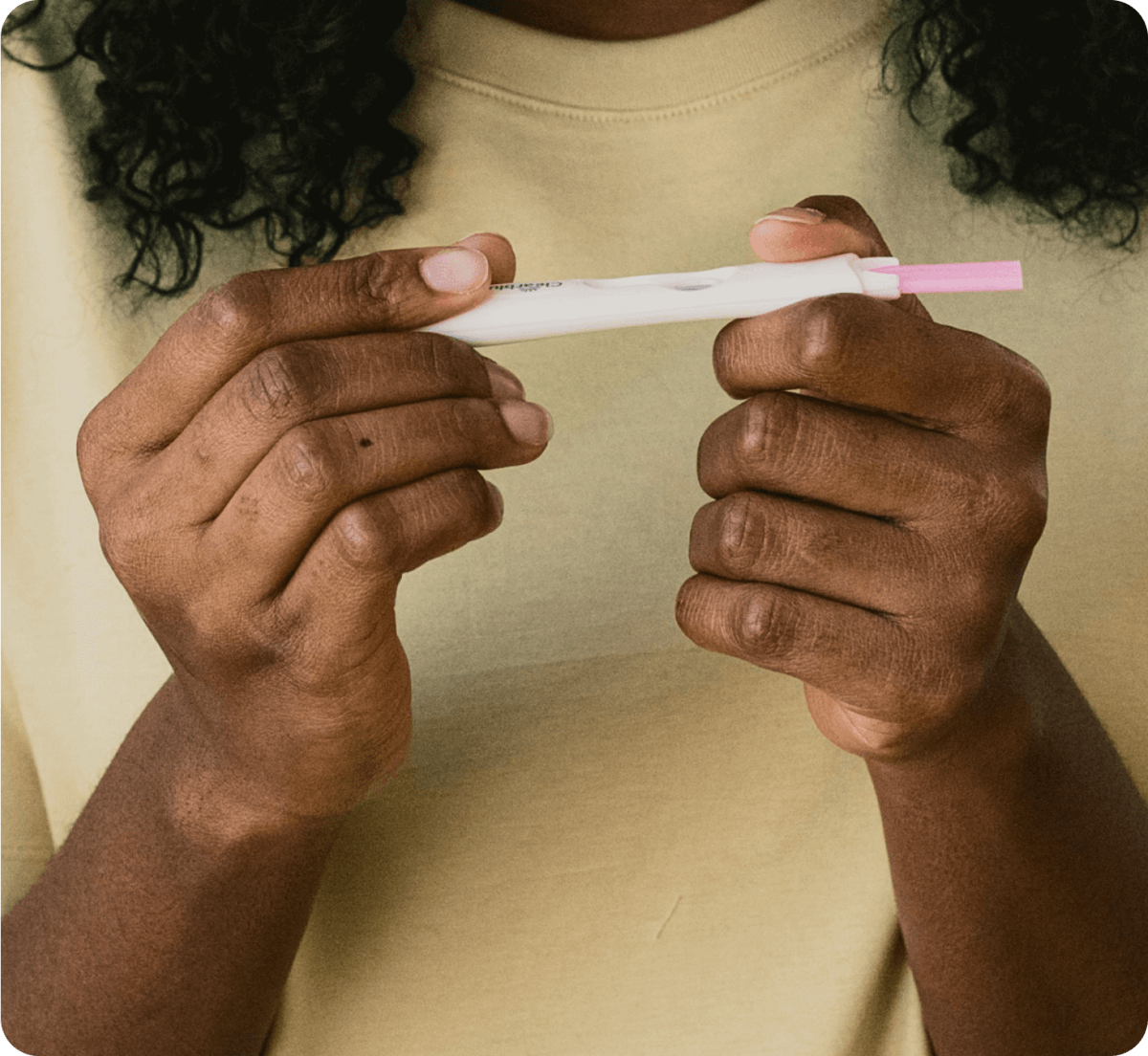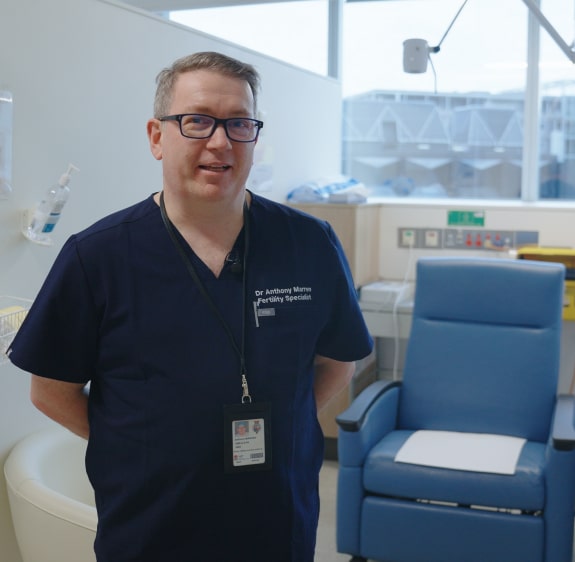
Fertility is the ability to conceive a child, which depends on the health and function of reproductive systems in both men and women. For women, it involves ovulation (release of an egg) and in men, it depends on the quantity and quality of sperm.

Fertility is essential as it allows individuals and couples the opportunity to grow their families and experience parenthood. Beyond personal fulfilment, fertility also impacts society by contributing to population continuity across generations.
The monthly chance of natural conception is highest when the female is in her 20s. Most people are surprised that even at this age, the chances of achieving a pregnancy is only 20 - 25% per month and this percentage decreases with age.
Traditionally, infertility is defined as not being successful in achieving an ongoing pregnancy after 6 months (female age ≥ 35-years) or 12-months (female age < 35-years) of unprotected intercourse.
This definition has recently been broadened to improve inclusiveness and equitable access to reproductive care irrespective of relationship status, sexual orientation or gender identity.

The revised definition states that infertility is a disease condition or status characterised by any of the following:
1. The inability to achieve a successful pregnancy based on a parent’s medical, sexual, and reproductive history, age, physical findings, diagnostic testing, or any combination of those factors.
2. The need for medical intervention, including, but not limited to, the use of donor gametes in order to achieve a successful pregnancy either as an individual or with a partner.
3. In patients having regular, unprotected intercourse and without any known aetiology for either partner suggestive of impaired reproductive ability, evaluation should be initiated at 12 months when the female partner is under 35 years of age and at 6 months when the female partner is 35 years of age or older.

Nothing in the definition should be used to deny or delay treatment to any individual, regardless of relationship status or sexual orientation.
Traditional infertility factors can be divided into:

Hormones play a crucial role in regulating the menstrual cycle and ensuring regular ovulation. Disruptions in hormonal balance, such as those caused by thyroid conditions or high prolactin levels, can interfere with this process and make conception more difficult. Polycystic Ovarian Syndrome (PCOS), is a common condition which often causes irregular ovulation and significant hormonal changes.
The fallopian tubes connect the ovaries to the uterus and is where fertilisation takes place. If these tubes are blocked or damaged, it can prevent sperm from reaching the egg.
Structural abnormalities like fibroids or polyps or congenital abnormalities like a septate uterus, can interfere with embryo implantation. Scarring from surgeries or prior infection resulting in Asherman syndrome may also reduce the uterine lining’s ability to support a pregnancy.
This is a common condition that occurs when tissue similar to the uterine lining grows outside the uterus, which can cause pain and potential fertility issues. Endometriosis can affect the function of the ovaries, fallopian tubes, and uterus.
As women age, particularly after 35, both the quantity and quality of eggs decline, leading to a diminished ovarian reserve and reduced fertility potential.
Lifestyle choices, including smoking, alcohol and drug use can negatively impact reproductive health. Poor dietary habits, lack of exercise, stress and being either overweight or underweight are also linked to reduced fertility.
Chronic conditions like diabetes or thyroid disorders can disrupt ovulation and hormone balance. Additionally, autoimmune diseases, sexually transmitted infections, and lifestyle-related conditions like obesity or uncontrolled blood pressure may also reduce fertility.
Unexplained infertility is a diagnosis made where a pregnancy does not result after a period of time in which there is regular sexual intercourse, and no pathology has been discovered after thorough investigation.

Male fertility can decline with age as testosterone levels drop and sperm quality decreases, particularly after age 40. While men continue producing sperm, older age is linked to reduced sperm motility and a higher risk of genetic abnormalities in offspring.
Lifestyle choices, including smoking, alcohol, drug use, obesity, and stress, can all reduce sperm count, motility, and health.
Testicular infertility factors, such as undescended testes, varicocele, or genetic conditions can affect sperm production directly. These conditions often lower sperm quality.
This category includes conditions outside the testes that impact sperm, like hormonal imbalances or systemic diseases (e.g., diabetes, thyroid issues).
Obstructive infertility occurs when a blockage in the reproductive tract, often due to infection, injury, or surgery, prevents sperm from reaching the semen.
DNA fragmentation involves breaks in sperm DNA, often caused by oxidative stress, smoking, or exposure to toxins. High DNA fragmentation can affect fertility and pregnancy outcomes.

Infertility can sometimes result from a combination of both female and male factors, which together make conception more challenging. In these cases, the reproductive health of both partners will need to be addressed in order to increase the chances of conception.
Treatment may involve a combination of approaches for both partners, which is why it’s important to work with a fertility doctor who can support both partners’ through continuity of care.

Unexplained infertility is a diagnosis given when a pregnancy does not result after a period of time with regular sexual intercourse, and no pathology has been discovered after thorough investigation. It is estimated to affect 30% of infertile heterosexual couples.

Individuals or couples should seek help at any time if they are concerned or if there is something in their history that may suggest an issue with fertility e.g. a prior diagnosis of PCOS or endometriosis.
It's a good idea to seek help for fertility issues if:
There are a range of assessments we can do to understand reproductive health and identify potential challenges. For women, common tests include measuring hormone levels and performing ultrasounds to assess the ovaries and uterus. Men typically undergo semen analysis to evaluate sperm count, motility, and quality. Depending on the results, further tests may be recommended, like genetic screening or hormone testing, to provide a comprehensive view of fertility health and guide appropriate treatment options.

The AMH test measures a hormone in your blood to check your ovarian reserve i.e how many eggs you have left. Higher AMH levels generally indicate a larger number of eggs, while lower levels suggest a reduced ovarian reserve. Although AMH testing does not predict the likelihood of natural conception or pregnancy, it can help inform fertility planning and treatment options.
Reproductive carrier screening is a genetic test that checks if you or your partner carry genes for certain inherited conditions. If both of you are carriers for the same condition, there’s a risk your child could be affected. It can help you make informed choices about family planning and options like IVF with genetic testing if needed.

This approach involves monitoring the menstrual cycle to identify the most fertile days, optimising the timing for conception.
IVF involves retrieving eggs from the ovaries and fertilising them with sperm in a lab. The resulting embryos are then transferred to the uterus to support pregnancy.
During IUI, sperm is directly placed into the uterus around the time of ovulation, increasing the chances of fertilisation.
Medications are used to stimulate the ovaries to produce eggs, supporting natural conception or use with other treatments like IUI.
PGT is used in IVF to test embryos for chromosomal and/or genetic conditions before transfer, helping to ensure healthy embryo development.
Donor eggs, sperm, or embryos can be used by couples or individuals who are unable to conceive with their own reproductive cells.
Surrogacy involves a woman (the surrogate) carrying a pregnancy for intended parents who cannot conceive or carry a pregnancy themselves.
Surgical options like hysteroscopy and laparoscopy address physical issues such as endometriosis, fibroids, blocked fallopian tubes, or uterine abnormalities that may impact fertility.

For those experiencing fertility challenges, scheduling a consultation is a proactive step toward understanding and managing your fertility journey.
I have dedicated my life to helping couples who have always dreamt of starting a family and understand that seeking fertility treatment is a journey that can be both physically and emotionally taxing. Let’s work together to explore your fertility options and find a way forward together.
The monthly chance of natural conception is highest when the female is in her 20s. Most people are surprised that even at this age, the chances of achieving a pregnancy is only 20 - 25% per month. This figure will drop to 15 - 25% when the woman is aged 35; 5 - 10% when the woman is aged 40; and < 5% when the woman is aged 45.
This decline in the monthly chance of natural conception is due to a decline in ‘ovarian reserve’ that a woman experiences as she ages. The decline in ovarian reserve reflects both a decline in the numbers of eggs but more importantly a decline in the quality.
Individuals/ couples should seek help at any time if they are concerned or there is something in their history that may suggest an issue with fertility e.g. a prior diagnosis of PCOS or endometriosis.
Otherwise, it is suggested that younger women (< 35-years) try for no more than 12-months prior to seeking assistance. Older women (≥ 35-years) should try for no more than 6-months prior to seeking assistance.
Depends on a number of factors such as:
Click here for further information on IVF success rates.